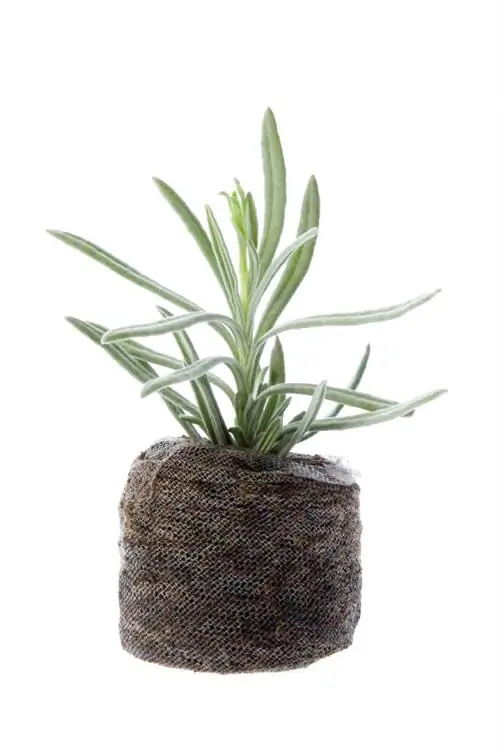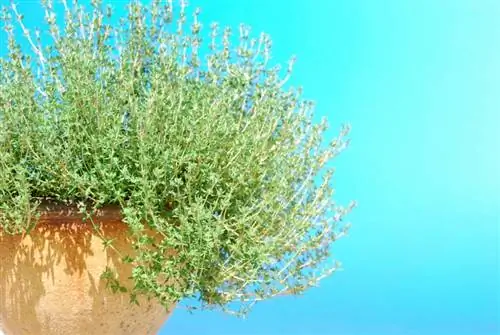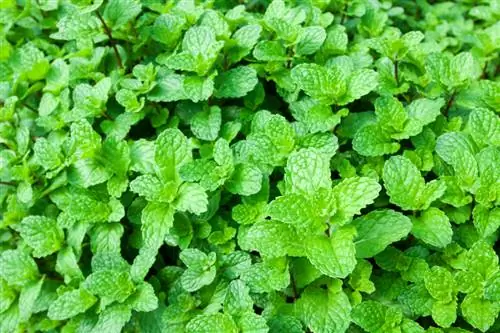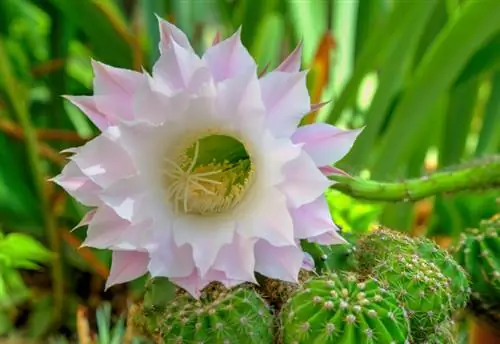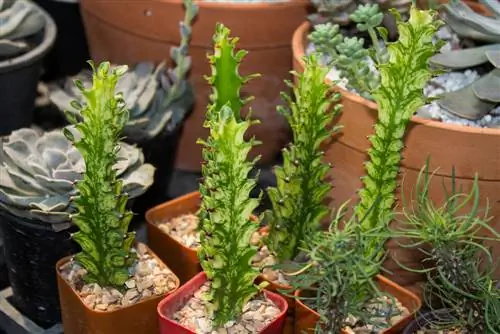- Author admin [email protected].
- Public 2023-12-16 16:46.
- Last modified 2025-06-01 06:02.
The roller spurge (Euphorbia myrsinites) is a prostrate, succulent plant with shoots up to 30 centimeters long and green-yellow flowers that can be seen in April. The plant, which originally comes from Turkey, is often cultivated in rock gardens, but also in pots or buckets and is very easy to propagate. However, you should be very careful, especially when cutting the cuttings: The milky sap of all spurge plants and therefore also the spurge is very caustic.
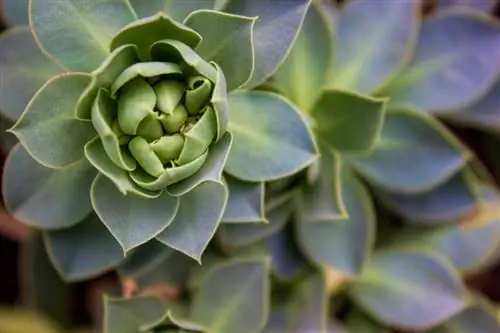
How can you successfully propagate roller spurge?
The roller spurge (Euphorbia myrsinites) can be propagated by vegetative propagation with cuttings, dividing the plant or by sowing. Care must be taken when working with the plant as the milky sap is poisonous and corrosive.
Vegetative propagation via cuttings
For the propagation of Euphorbia myrsinites, you can use non-flowering shoots that are cut in spring.
- Cuttings should be about 10 centimeters long.
- Leave the cut shoot in a glass of water for a few minutes.
- Now carefully remove all milky juice residues under running warm water.
- This measure makes root formation easier.
- Now leave the shoot in a dark and dry place for about four to five days.
- You can also put it in a vessel with charcoal.
- The now rather shriveled looking cutting is then planted.
- Ideally, you should use a loose soil and sand mixture for this.
- Alternatively, planting directly at the final location is also possible.
Caution: Milky sap from spurge is highly poisonous
Always wear gloves (€9.00 on Amazon), long clothing (especially long-sleeved tops) and safety glasses when handling and especially when cutting the roller spurge: The latex-like milky sap is highly toxic and can get on the skin and mucous membranes can cause severe burns.
Share spurge
Furthermore, the spurge can be propagated very well by division. To do this, dig up the plant carefully, if possible without damaging the roots. Divide the rhizome either by pulling it apart or with the help of a knife - be sure to wear long sleeves and gloves! - and plant the individual parts immediately in their new location.
Propagation of spurge by sowing
The spurge is capable of self-sowing. However, this does not happen on a mass scale, but only sporadically. If self-sowing is not desired: The resulting young plants can be removed very easily.
Tip
Flowered spurge shoots always die, but new ones quickly grow from the center of the plant. Also keep in mind that the spurge, which is used to a warm Mediterranean climate, is not sufficiently frost-hardy in this country and therefore requires good winter protection.


